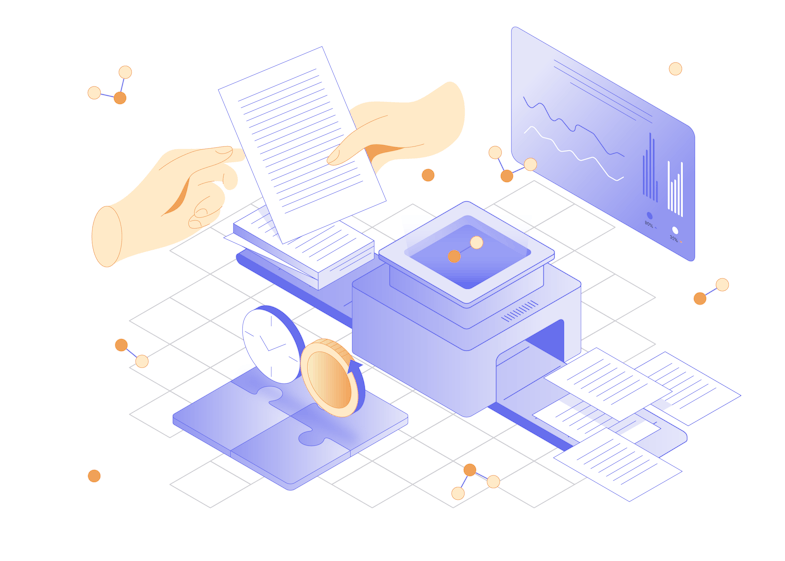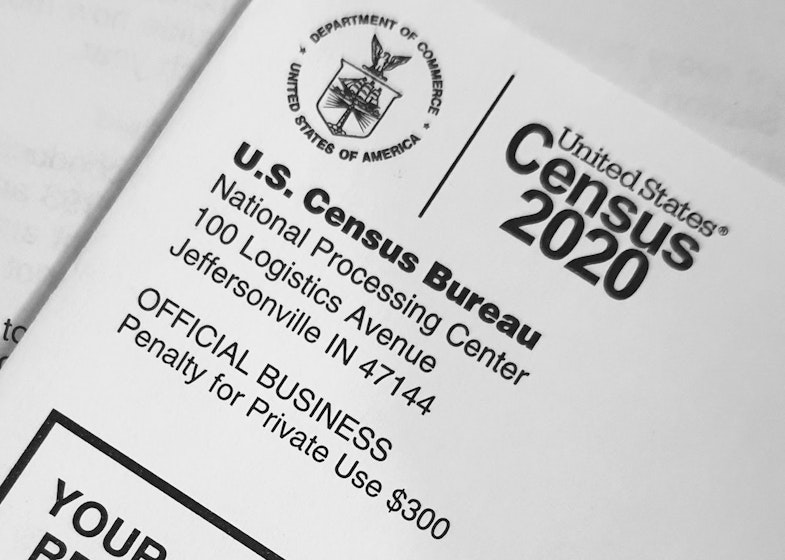Which Source Of Data Would Be The Least Helpful For Secondary Data Use?
Back to web log
Secondary Data: Analysis, Benefits, Importance, and Sources

Coresignal
September 20, 2021

Competently using data has proven to exist the path towards success for many entities beyond different fields. In business, information technology meant competitive advantage, innovation, and turn a profit. However, in order to attain all these benefits, companies need to understand and take advantage of different kinds of data analysis and treatment practices. One of import distinction to be aware of is between primary data assay and secondary data assay. The importance of collecting new data is frequently and rightly stressed. So, let's look closer at why it's vital to use secondary data as well, and what benefits tin come from analyzing secondary data.
What is secondary data?
As mentioned, when businesses collect data themselves, it's considered primary data. So, what makes up secondary data? Simply because of the fact that it has already been collected by a primary source and is now being used by someone else (a secondary source) for their ain purposes.
Likewise, primary enquiry is when the data is nerveless past researchers themselves and is essentially new data. Conversely, secondary research or secondary information analysis is when analysts utilize data from previous enquiry or exterior principal sources instead of collecting information themselves.
Therefore, secondary data is any data that is already available before the research begins. Secondary information collection involves getting data that has already been produced or recorded, instead of producing new data. More than specifically, secondary data is information originally created and used by a primary source for a specific purpose that is and then collected and analyzed by a second party.
Secondary information sources
Primary research is done with the data collected from authentic sources. This means that, for case, researchers conduct interviews or acquit out field tests to get the information for the assay.
Sources of secondary information, on the other hand, don't need to be accurate. Any source information collected for whichever purpose can exist a source for secondary data analysis. Naturally, this ways that there are many such sources.
For businesses and other organizations, all these sources tin can be divided into internal and external. Internal sources are those that come from within the organization. For instance, researchers may use existing data from accounting, customer feedback, or operational reports when doing marketing research to ameliorate a business firm's marketing strategies. This data is nonetheless secondary as it was originally recorded for other purposes, simply as it originates within the same company as the marketing inquiry itself, it's internal data.
All other sources, those that are outside of the organization, are external sources of secondary data. Of course, this group of sources is all-encompassing and varies immensely. Here are some of the nearly mutual examples of such sources.
- Public legal sources and government publications (including public libraries and their sources for administrative information, likewise as census information)
- Media (either broadcasted, printed, or otherwise released by TV, paper, or information from other media companies)
- Literature and literature review (including releases from academic publishers, like Cambridge University Printing or Sage Publications)
- Manufacture reports and other published market or manufacture research
- Professional person data providers
- International organizations
To run into a JSON example of external secondary information, download the sample below.
Free data sample
- Encounter the sample structure of our employee and company JSON records
- Explore the principal employee and firmographic data points
- Find out the definition of each data point
Nosotros might use your email to provide you with information on services that may be of interest to you. You can opt-out of whatever marketing-related communications at any time. For more information on your rights and data apply delight read our Privacy Policy.
Main data vs. secondary information
The departure betwixt primary and secondary information is not only source type or whether they have been used before. These two types of data unremarkably differ in their features which accept important implications when choosing which type of analysis to behave.
Data collected for primary research is raw information that can be structured according to the goals of the analysis. Secondary data usually has already been structured or processed, oftentimes more than than one time, thus at first, information technology is presented for assay in a grade that was meant to suit something else.
Qualitative data is more than often used in primary research. Secondary inquiry is more associated with quantitative data, such as administrative information or census data, often studied by social scientists. However, at that place are besides valid qualitative data research methods that can exist applied for secondary data in marketing enquiry or other business concern-relevant analysis. Hither are some advantages and disadvantages of secondary data analysis as compared to primary inquiry

Advantages of secondary enquiry
Saving time and endeavour
Collecting secondary data for research is much faster and easier than primary data collection. This allows researchers to save time by going straight to the analysis procedure. Additionally, researchers stay focused on the enquiry goals without having to worry about finding and utilizing master sources, which can be a lot of work on its ain.
Cost-effectiveness
Secondary research is generally the cheaper selection. It is quite costly to organize focus groups, hire people to question persons of involvement, or build and maintain various sensors able to record large amounts of data. Meanwhile, secondary data may cost next to nothing to get every bit all the data one could utilize is already available and often easily attainable from free institutions similar public libraries. Even when such data is not enough and one has to turn to data providers or otherwise spend money to acquire secondary data, it's nevertheless cheaper than primary information drove.
Cleaned and structured information
Secondary information has ofttimes been cleaned before using it for principal purposes. This means that the information already ascends to at least some data quality standards. At that place may exist many quality issues with just gathered primary data. Thus researchers have to put additional resources to clean it. Additionally, secondary data is usually structured, which, as mentioned, may non conform the particular requirements of secondary enquiry at hand, merely information technology does bring some organisation and readability, which can prove fourth dimension-saving.
The large book of data
Finally, at that place's only so much main data that researchers tin collect before having to start the actual analysis. With secondary data, there's no such limit. At that place is more information available in secondary sources than one could handle in a lifetime of data assay. Thus, secondary data researchers certainly don't accept many restrictions on what sources to cull from.
Disadvantages of secondary research
Differing requirements
The biggest among the disadvantages of secondary information inquiry is that 1 can't quite be sure that the data volition adapt the goals of the research exactly. Principal information analysts can gather exactly what they need. Secondary researchers, on the other manus, work with what they were able to find from what is available.
Control over the collection process
Secondary data analysts can't be completely sure that the data was collected according to rigid standards and therefore is valid and representative. They may check the source and try to notice out as much about the collection as possible, just there will always be a caste of uncertainty.
Lacking uniqueness
Primary researchers piece of work on unique information that no one else has had earlier. Therefore they have a greater adventure of arriving at unique insights. Secondary data analysis tin can be unique too, just only for as long as no one else uses the same information for the same research purposes.

Five Metrics for evaluating and analyzing secondary information
The first pace of secondary data assay is the evaluation of data. Although, as mentioned, it's impossible to have complete quality control over secondary data, researchers can still exercise some control. The following criteria are crucial when evaluating secondary information in society to determine their suitability for the analysis at hand.
- Reliability of the source
How trusty is the information source? Is it a reputable information provider or an established publisher? Researchers should also check to find out as much equally possible about the circumstances of data collection.
- Relevance
Not all trustworthy information is relevant data for a particular analysis. Researchers must offset found clear analysis goals to decide information relevance so check what kind of information particular data sources hold.
- Overall quality
Of course, analysts need to pay attention to any errors, redundancies, or other possible problems with the data they're considering for usage. Poor information quality costs businesses between $9.7 1000000 and $14.two million every year.
- Freshness
How new is the data? When was it concluding updated? Outdated information may no longer answer the questions raised by the analysis goals.
- Accessibility
The format of the data and how it is accessed are too pivotal for data analysis. The easier it is to admission information, the more efficient and reliable secondary inquiry will be.
The importance of secondary data assay in business
For years business heads and data analysts have been lamenting the fact that well-nigh data never get to be analyzed. For case, a few years agone, it was estimated that only about 0.five% of all information is ever analyzed and utilized.
Having this in mind, ane tin't aid but wonder whether it'due south worth spending money on additional data production when so much existing data never gets used. Of course, primary enquiry is often necessary, for example, when new qualitative data is required, but information technology is equally important not to overlook the potential of secondary data.
Especially when information technology comes to secondary quantitative data, the large volumes of alternative data already available would suggest get-go going for secondary inquiry. Thus, combining the two research methods is the surest way for businesses to do good from data assay.
Wrapping up
Researchers tin either collect new information for analysis or go secondary data from some of the many various sources. Whichever path is called, the key to success and business concern benefits is, as always, attending to data quality and choosing the correct method for the right goals.
Which Source Of Data Would Be The Least Helpful For Secondary Data Use?,
Source: https://coresignal.com/blog/secondary-data/
Posted by: meadresend.blogspot.com


0 Response to "Which Source Of Data Would Be The Least Helpful For Secondary Data Use?"
Post a Comment